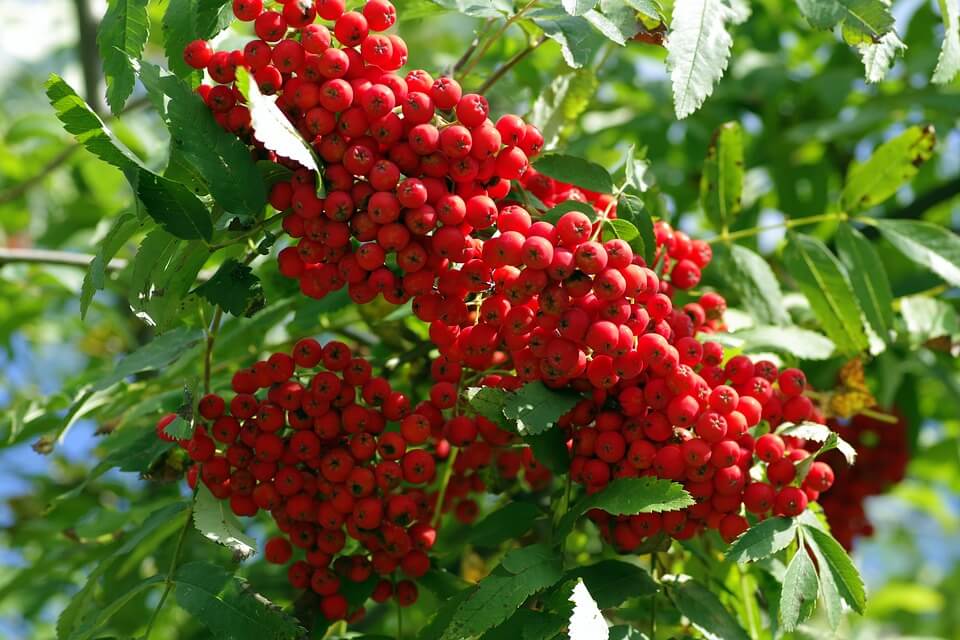
The Rowan tree, commonly referred to as ‘Mountain Ash’ has become an incredibly popular tree in the UK. With a compact habit and high tolerance of pollution, it has been widely planted in urban spaces. Rowan trees are easily identifiable in the winter with their colourful displays of red, orange, or even white berries.
It was similarities between the Rowan and the Ash’s pinnate leaves that led to the tree’s misnomer ‘Mountain Ash’ – the mountain part having its origin in that Rowan’s are found at much higher altitudes. However, Rowan is completely unrelated to the Ash with the former of the rose family Rosaceae, the later part of the Oleaceae family.
Rowan is typically associated with the European variety Sorbus aucuparia which derives from the Latin word sorbus for ‘service tree’ and aucuparia which is formed from the latin words avis for ‘bird’ and capere for ‘catching’. Rowan trees were traditionally used in game hunting as many birds were attracted to the tree’s berries.
There are other species with the Sorbus genus found throughout the Northern hemisphere including Asia. Sorbus commixta or ‘Japanese Rowan’ is native to Japan and Korea where it is known as nana-kamado, which literally translates to ‘seven (times in the) stove’ as the wood is robust and can be used several times in fires. Additionally there is the Sorbus aria, or ‘Whitebeam’ which hails its name from the lightly coloured timber it produces.
Despite being currently popular in urban spaces, the Rowan Tree has held a special place in our collective imaginations for centuries. The European Rowan is richly documented in folklore as protecting people from evil and demonic spirits and was commonly referred to as the ‘Wicken Tree’ or ‘Witch Wood’. It is for this reason that Victorian writers commented on people, especially in Scotland, having Rowan trees planted outside of their homes. S. aucuparia has also been known as the ‘wayfarer’s tree’ and the ‘traveller’s tree’ as it protected travellers on treacherous journeys and prevented them from getting lost.
One thing is almost universal about the Rowan and that is that they are adored by wildlife. Come Autumn all manner of birds will gorge themselves readying for winter. In their natural form, however, the berries are far too bitter for human consumption, although they can be freezed to break down the acids and then cooked to make jams, chutney, jelly or even a wine! An exception to this is whitebeam whose berries are edible when rotten. Enjoy!
–
Jorge works in the Primrose marketing team. He is an avid reader, although struggles to stick to one topic!
His ideal afternoon would involve a long walk, before settling down for scones.
Jorge is a journeyman gardener with experience in growing crops.